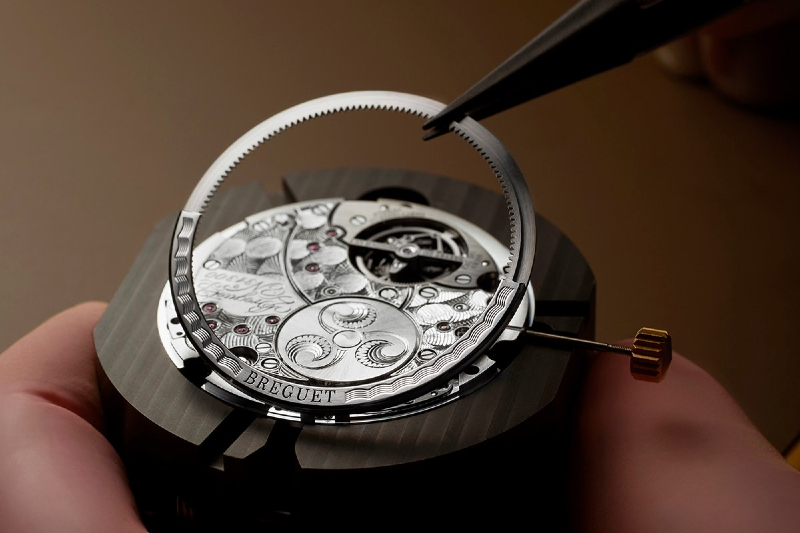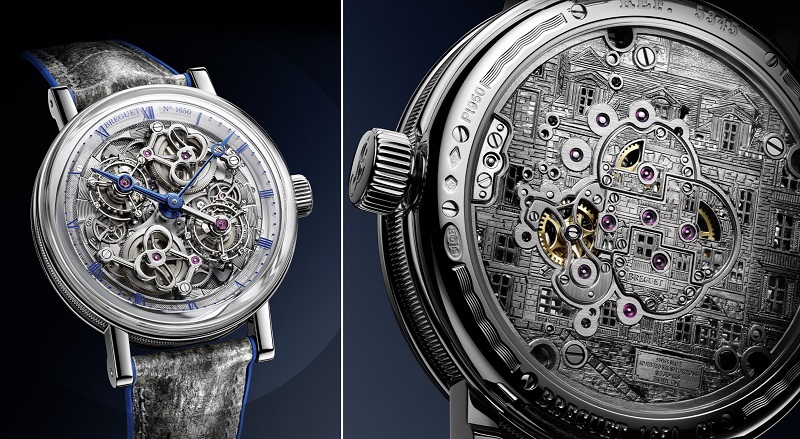
The Breguet No. 1176 ‘Montre garde-temps à tourbillon’ pocket watch from the early 1800s (All photos: Breguet)
Some call it superfluous, others superlative. The tourbillon is among the rare complications in the horological universe that add little by way of function but are highly sought after nonetheless — with a price tag to match.
In the late 1700s, watchmaker Abraham-Louis Breguet confirmed that gravity had a negative impact on the accuracy of his timepieces. Portable timekeeping in that era referred to pocket watches, which were slipped upright into pockets or laid flat on tables or mantles. These alternating horizontal and vertical positions increased the demands placed upon the hairspring, responsible for supplying energy to the balance wheel, causing irregularity in the rate of oscillations and decreasing accuracy.
Abraham-Louis was no ordinary watchmaker. His timepieces were so elegant that he quickly became the darling of European aristocrats and nobility such as Marie-Antoinette and King Louis XVI of France (this association would later have him marked for the guillotine during the French Revolution, but our hero fortunately escaped that scheduled appointment with a fatal blade). Horological innovations were Abraham-Louis’ speciality, and he is credited with developing or contributing to the development of several world firsts, including the first self-winding mechanism, shock protection system, and wristwatch, commissioned by Queen Caroline Murat née Bonaparte of Naples in 1810.
breguet_tourbillon.jpg

However, it is the tourbillon for which Abraham-Louis is most famously known. It was his protagonist in this battle against gravity, attempting to counter the force’s impact on the movement. In 1795, he tried installing an entire escapement, comprising gravity-sensitive elements — such as the balance, spring, lever and escape-wheel — inside a mobile carriage. This cage would execute a complete rotation every minute regardless of the position of the watch, thus regulating the movement and reducing to an absolute minimum the rate variation that occurs when the pocket watch alternates between vertical and horizontal positions.
Abraham-Louis earned the rights for a 10-year patent for the tourbillon on June 26, 1801, but the regulator was far from ready. The complication was so complex that it took two experimental models to fine-tune it, including Watch n°169, which he later gifted to the son of London-based watchmaker John Arnold. The first tourbillon was commercialised in 1805 and presented to the public the following year at the National Exhibition of Industrial Products in Paris.
Not everyone understood how it worked, but that did not put them off the mechanism, for it was — and still is — a thing of striking beauty. Few could glance at a tourbillon and not be immediately mesmerised by its balletic grace. Named after the French word for whirlwind, the tourbillon twirls continuously and hypnotically in its cage, a poetic illustration of freedom within a frame.
breguet_5345.jpg

It quickly found fans, among them the renowned Italian patron and collector Count Giovanni Battista Sommariva; the Bishop of Cambrai, Monsignor Louis Belman; and George III, Prince Regent of England, who acquired a large tourbillon mounted on top of a gilt bronze cone in 1814. It is believed that from 1805 until Abraham-Louis’ death in 1823, just 35 iterations of the tourbillon were sold, but his invention would not die with him.
Instead, it flourished and is still coveted in the contemporary watch market. In addition to the traditional tourbillon, popular variations comprise the flying tourbillon, whose minimalist construction creates an illusion of suspension so the mechanism appears to float untethered in the middle of its cage; the multi-axis tourbillon that allows the regulator to spin in any direction, making for a spellbinding vision; and the multiple tourbillon, in which the mechanical ballerina shares the stage with a twin.
Its popularity continues to grow, even though modern watchmaking has little need for the tourbillon. In fact, it has been proven that tourbillons are not only no more accurate than a typical wristwatch escapement, but they might even hamper accuracy in some instances.
“Today, the industry uses mono metallic balances which do not move once poised in the factory or workshop, and so, for practical purposes, relegates the tourbillon to the history books,” independent British horologer Roger Smith told watch website Hodinkee. “Where a tourbillon does have a role today is when a watchmaker wants to show off their skill, artistry and flair for miniaturised mechanics and to stand out from the crowd. I would still put one in a watch.”
And that is the heart of the matter. The same way we have no real need for watches in this age and yet still imbue them with aspirational value, we continue to gravitate to this most enchanting of complications purely by virtue of its charm. It is the culmination of precision engineering and supreme craftsmanship, two fields in which absolute mastery fascinates us. Either instils elegance into the ordinary; combined, they turn the mundane positively magical.
The question now is not why buy a tourbillon watch, but why not?
This article first appeared on June 21, 2021 in The Edge Malaysia.


